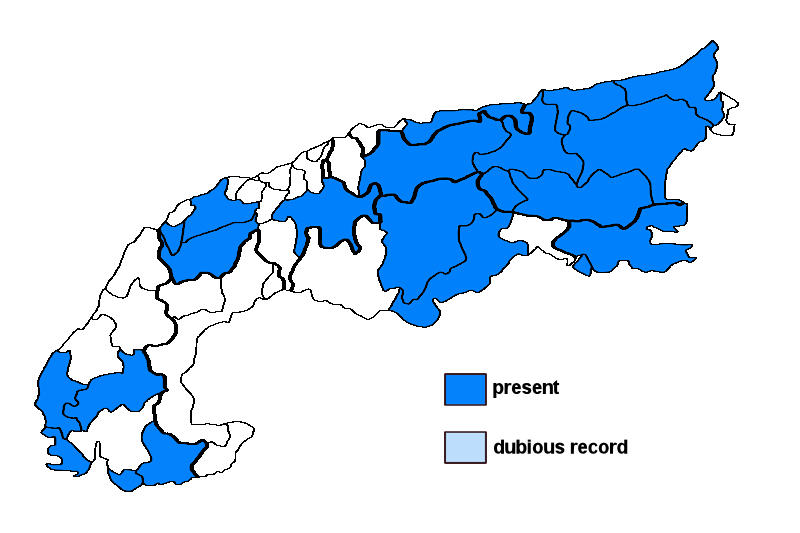Verrucaria elaeomelaena (A. Massal.) Anzi
Syn.: Lithocia elaeomelaena A. Massal., Verrucaria degenerascens Nyl. ex A.L. Sm., Verrucaria jurana Zschacke
Lichenised.
Substrate: ,
Altitudinal range: from the submediterranean/colline belt (potential vegetation: mixed deciduous forests dominated by Quercus and Carpinus) to the alpine belt (potential vegetation: treeless Alpine grasslands and tundras, to the lower limit of perennial snow and the equilibrium line of glaciers)
Note: a cool-temperate to boreal-montane, perhaps circumpolar species, almost perennially submerged in cold montane to alpine creeks, emerging only in very shaded situations; perhaps more widespread in the Alps. In Northern Europe this name was often used for V. funckii (Spreng.) Zahlbr. Based on the currently available data from North of the Alps, V. elaeomelaena s.str. appears to be restricted to limestone, but it cannot be separated by morphology alone from several other unnamed lineages within the aggregate which grow on calcareous and siliceous substrata alike, especially in deep shade.
Austria: Tirol; Salzburg; Kärnten; Steiermark; Oberösterreich; Niederösterreich (incl. Wien); Germany: Oberbayern; Switzerland: Bern; Graubünden; Vaud; Valais; France: Haute-Alpes; Alpes-Maritimes; Drôme; Vaucluse; Var; Italy: Veneto; Trentino Alto Adige; Slovenia: Alpine and Pre-Alpine Slovenia; Trnovsky Gozd;





